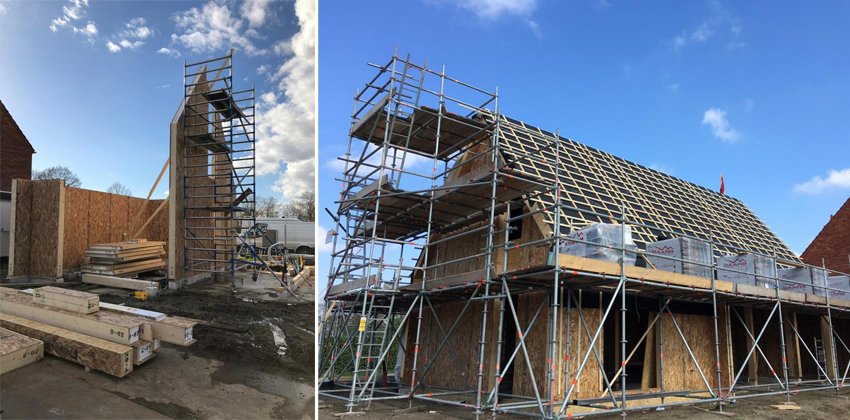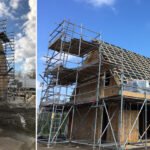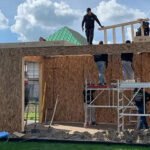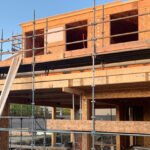
Acoustics and Fire Safety in SIP Buildings Explained
When developers and homeowners consider Structural Insulated Panels (SIPs), the first benefits that come to mind are usually speed and energy efficiency. But two other critical factors—acoustics and fire safety—are equally important in determining whether a building is safe, comfortable, and compliant with regulations.
This blog explains how SIPs perform in both areas, what standards they meet in Europe, and why they are a safe and reliable choice for residential and commercial construction.
Acoustic Performance of SIPs
Acoustic comfort is a key part of modern living. Whether in urban apartments, suburban family homes, or resort cabins, residents expect peace and quiet inside their buildings. SIPs deliver strong performance thanks to their composite structure.
How SIPs Reduce Noise
- Solid Composite Structure: OSB facings bonded to insulation create a dense, continuous wall with fewer cavities where sound can travel.
- Insulated Core: Neopor® insulation dampens airborne sound transmission.
- Sealed Joints: Airtight detailing prevents noise leakage through gaps.
Measured Performance
Tests across Europe show that SIP walls typically achieve Rw values of 40–50 dB, sufficient for residential standards. With additional cladding or interior finishes, this can increase further, making SIPs suitable for schools, offices, and multi-family housing.
Applications
- Urban Housing: Reduces traffic noise.
- Multi-Family Homes: Prevents sound transfer between units.
- Hospitality: Ensures quiet environments for resorts and vacation homes.
Fire Safety in SIPs
Fire safety is one of the most scrutinized aspects of any building system. SIPs are designed and tested to meet stringent fire performance standards.
How SIPs Respond to Fire
- OSB Facings: Treated OSB provides initial fire resistance.
- Insulation Core: Neopor® contains flame-retardant additives, slowing fire spread.
- Composite Action: The panel acts as a unified system, delaying structural failure.
Fire Ratings
Independent tests show that SIP walls and roofs can achieve 30–60 minutes of fire resistance (REI 30–60) depending on thickness and assembly. When combined with gypsum board or other fire-rated finishes, performance can be extended further.
Compliance with European Standards
SIPs are tested according to EN 1365 and EN 13501 standards. Quacent SIP systems meet the requirements for residential housing and can be detailed to comply with stricter commercial or institutional demands.
Addressing Concerns
“Aren’t SIPs Just Foam and Wood?”
This is a common misconception. SIPs are engineered systems that combine structural facings, treated insulation, and detailing for fire and acoustic safety. They are rigorously tested under European standards.
“Do SIPs Burn Easily?”
No. Neopor® cores are flame-retardant, and OSB facings char rather than ignite quickly. When finished with gypsum board, SIP walls resist fire spread effectively.
“Are SIPs Too Noisy?”
On the contrary, SIPs provide excellent noise reduction, often outperforming timber-frame walls of similar thickness.
Enhancing Performance
While SIPs already perform strongly, additional measures can enhance safety and comfort:
- Double-Layer Gypsum: Extends fire resistance up to 90 minutes.
- Acoustic Layers: Adding resilient channels or soundproof plasterboard boosts noise control.
- Exterior Claddings: Brick or stone veneers add both fire resistance and sound insulation.
These options allow architects to tailor SIP assemblies to meet project-specific requirements.
The Role of Quacent
Quacent SIPs are designed with both safety and comfort in mind:
- Neopor® Core with flame-retardant additives.
- Factory Precision ensuring airtight joints for better acoustic control.
- Technical Support for detailing to achieve required fire ratings.
- Compliance Documentation including test results for EU markets.
By supporting contractors and architects, Quacent ensures SIP projects meet the highest standards of both performance and safety.
Looking Ahead
As building codes across Europe tighten, acoustic and fire safety will only become more critical. SIPs are well positioned to meet these requirements thanks to:
- Continuous improvement in fire-resistant finishes.
- Integration with digital design tools for better detailing.
- Growing recognition of SIPs as safe, durable, and compliant systems.
In the future, expect SIPs to play an even greater role in multi-family housing, schools, and commercial buildings where acoustic and fire performance are essential.
Conclusion
SIPs deliver more than speed and efficiency—they provide proven performance in both acoustics and fire safety. With solid composite construction, airtight detailing, and flame-retardant materials, SIPs meet the rigorous demands of European building codes while offering comfortable, quiet, and safe environments for occupants.
For developers and architects, SIPs represent a solution that balances innovation with reliability. In an industry where safety and comfort are non-negotiable, SIPs prove themselves as a trusted system for the future of European construction.





Add a comment